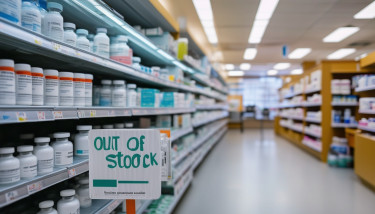COVID-19: 455 deaths, over 16,000 new cases in Hungary over the weekend


The fact that all percent positive readings are a lot higher than a year ago also does not bode well for the future, but there are definitely promising signs. As you can see on the charts below, the 3-day / 21-day test positivity rate is back under 100%, but due to the weekend impact we need to see the reports in the second half of the week to be able to draw more reliable conclusions.
IF WE WANT TO BE CERTAIN THAT THE KEY EPIDEMIOLOGICAL FIGURES ARE STARTING TO IMPROVE, THE 7-DAY AVERAGE OF THE 3-D/21-D POSITIVITY RATE WOULD NEED TO GO SOUTH OF THE 100% MARK.
On 8 December, for the first time in months, it fortunately dropped to under 100% and is currently at 92.74%. It has been falling since 1 December (106.3%), while it was as high as 160% in late October.
The abatement of the current 'wave' is first be indicated by the percent positive peaking and retreating. It is followed by a drop in daily new COVID-19 cases, hospitalisations, the number of ventilated patients, and eventually coronavirus-related deaths.
Changes in the positivity rate are reflected in the other epidemiological data with a delay:
- new cases– 3 to 5 days
- hospitalisations – 7 to 10 days
- patients on ventilator – 12 to 15 days
- deaths – 18 to 22 days.



Over the past three days, SARS-CoV-2 claimed 455 lives in Hungary, according to data by the Coronavirus Task Force.


The tables below show how the changes in the number of daily new confirmed COVID-19 cases, hospitalisations and the number of ventilated Covid patients in 2021 and 2020. These are all 7-day averages to avoid distortions caused by comparing weekdays with weekend days when authorities do not publish statistics, and the aggregate data released on Mondays have to be distributed for three days with a certain methodology.
In the top chart we compared the figures of 12 December to one, two, three, and four weeks earlier. The second chart shows the week-on-week changes.
The number of new cases does show an improvement, and the 7-day average is already 32% lower than a week ago and 42% lower than a fortnight ago. The number of Covid patients in hospital also went down 7.0% w/w, which compares with a 1.5% rise a year ago. The number of ventilated patients, however, is still up 3.7% vs. -2.4% in the base period. These figures give reason for cautious optimism that the current 'wave' could have peaked.
Note that the ventilation data are adjusted by Portfolio's methodology, i.e. the official daily figures have been adjusted 40% higher since 28 Nov, not just for the sake of comparability but also to reflect reality more accurately.


The following charts show changes in two of the key metrics in the pandemic, the number of Covid patients in hospital and on ventilator as well as their relevant ratios.

On the charts below the 0% line is important. When the curves are under 0% there’s a decline, when they go over 0% it’s an increase. The changes show that the situation in terms of hospitalisations started to worsen after 20 August.
More importantly, when a value is north of 0% but the curve descends, it means an increase at a slowing rate, rather than a decrease. If the curve is above 0% and ascending, it is an increase at an accelerating rate. When we are under 0% and the curve goes lower, it translates into an accelerating decrease, and when it goes up it marks a decelerating decrease. These charts also give reason for optimism. All three curves are under the 0% mark and descending.

The raio of Covid patients on ventilator to those hospitalised has been rising, as the latter number has been dropping at a greater rate than the former.



As regards the left-hand chart below, the number of new COVID-19 cases accumulated since 28 August is already 41% higher than in the same period of 2020, while it was 10% higher four weeks ago and 40% lower eight weeks ago. In the meantime, the accumulated time Covid patients spend in hospital is 18% shorter than a year ago, while it was about 30% shorter four weeks ago and 14% less ten weeks ago. (The turnaround came about on 22 September, about a month after the no-restrictions four-day celebrations of the foundation of the state on 20 August.)
On the right-hand chart see that ten weeks ago the number of accumulated days spent in ICUs (practically on ventilator) was 80% higher than the base period's print (+22% eight weeks ago). Since then, the difference has shrunk considerably, to as low as 0.93% on 16 November, but grew to almost 9% by now.

IN TERMS OF THE ACCUMULATED NUMBER OF COVID-RELATED FATALITIESWE ARE IN A WORSE SITUATION THAN A YEAR AGO.
The accumulation is 7.5% higher vs. being 15% lower four weeks ago, 35% lower 8 weeks ago, and -17% 10 weeks ago. Most importantly, same time last year there were no vaccines and cross-immunity (if it works at all) was assumably not as strong as currently. The right-hand chart also depicts that those that admitted to hospital with coronavirus infection are generally in worse condition than Covid patients a year ago. Note that this the accumulation of Covid fatalities reflects only the data provided by the Coronavirus Task Force, i.e. the actual figures that will be shown only in the KSH statistics much later are a lot higher.

Lacklustre progress with vaccinations
The Hungarian government is organising vaccination campaigns in each settlement, and expects the administration of the third doses of COVID-19 vaccines to skyrocket, said Prime Minister Viktor Orbán in his regular interview with public radio MR1 last Friday.
If you take a closer look at the current vaccination campaign (announced for Nov 22-28 with a 2.5-week preparation time and then extended by another week and then by another one to 12 Dec) where no prior registration is required to get your first, second or third dose of a COVID-19 vaccine, it will be clear that 3rd doses remain vastly more in demand than 1st or 2nd jabs.
It is now evident that it was actually not the “hassle” of prior online registration and appointment booking that prevented around three million Hungarians from getting inoculated against coronavirus. It’s their determination not to get vaccinated or merely a lack of Internet access that prevented them from signing up. And it’s not even a hassle, but a simple procedure that takes a couple of minutes if you have a social security number, Internet access and a minimal level of digital literacy.
Third doses are in clearly much greater demand than 1st and 2nd jabs combined. Three quarters of all doses administered since 2 August were third shots.






Cover photo: Getty Images








